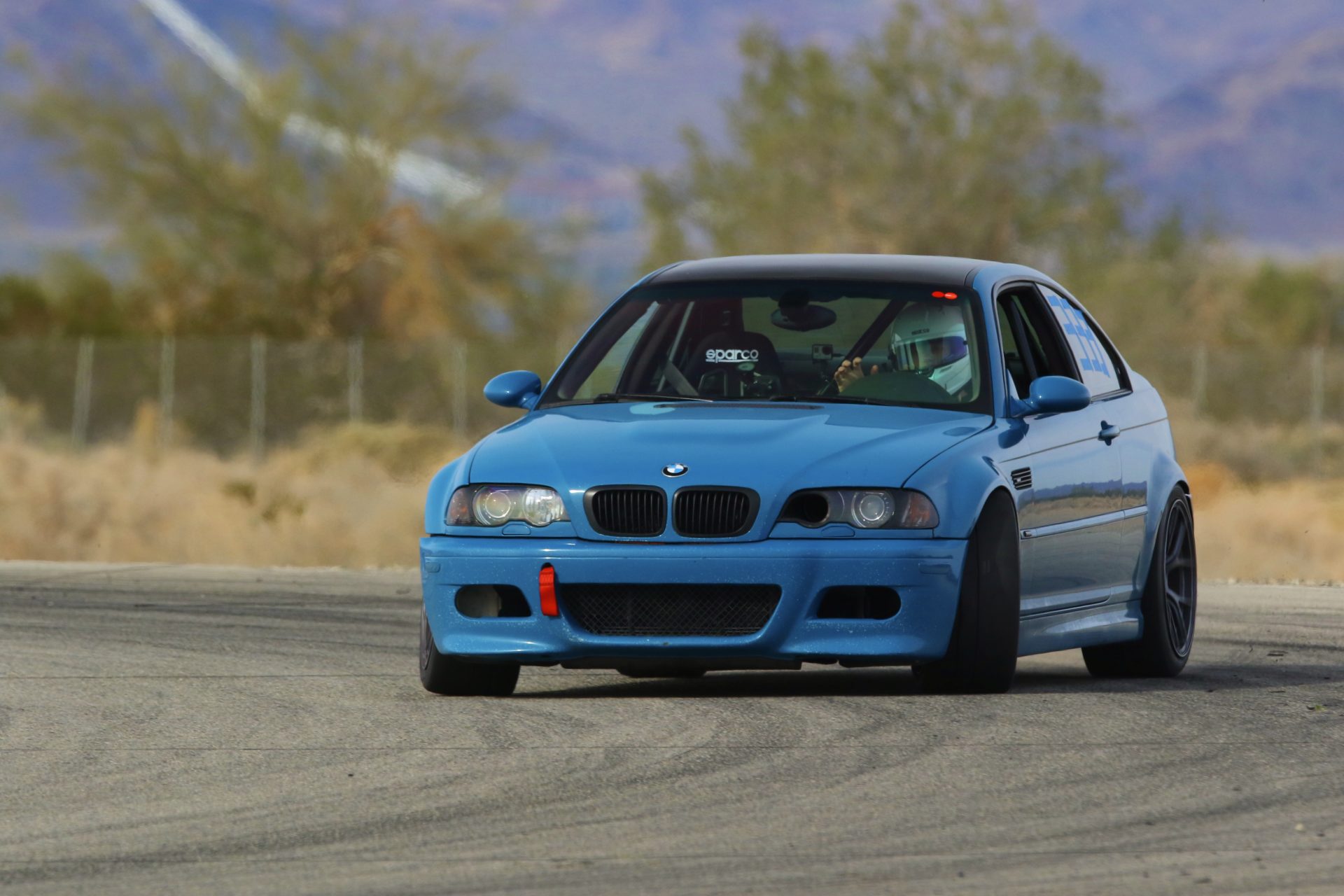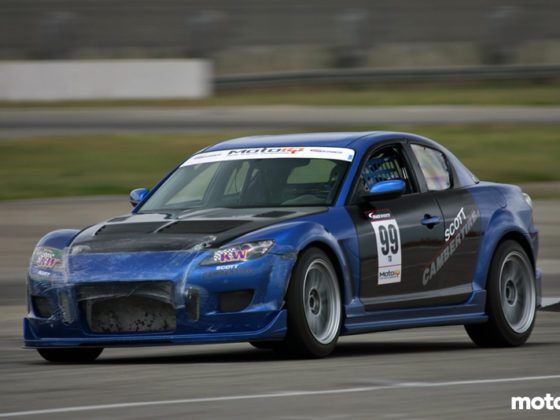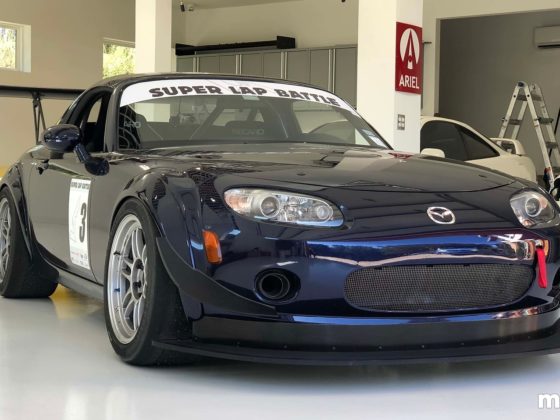On to the results! Luckily, California’s famously stable weather helped make a back-to-back comparison of the factory oil cooler an easy proposition. I was able to attend track days at Chuckwalla Valley Raceway on back-to-back weekends, with air/track temperatures within 2 degrees of each other, to make the test as fair as possible. Running very similar lap times both days, I also attempted to spend similar amounts of time on track both behind other cars (dirty air) and out in the open to see how it would affect cooling.

Luckily, despite having a higher oil capacity, the oil did not take significantly longer to come up to temp, but once up to temp, while hot lapping, it seemed to level out around the 230-240F range. With the OE cooler, the temps would just slowly climb higher and higher until I’d do a cool-down lap or come off track. With the CSF oil cooler installed, I was able to run full sessions at speed on track again!

In the screenshot below from AEMData software, I’ve overlaid data from the OE cooler and the CSF unit. The sharper, lighter traces are with the CSF oil cooler installed, and the darker fuzzy traces from the previous event with the OE oil cooler. You can see that while inlet air temperatures were within a few degrees of each other, the oil temps on the OE cooler just climb and climb, until about 260F where I called it quits and did cool-down lap. With the CSF cooler in place, despite almost identical ambient & track temps, engine oil temps seemed to level off right around the 235F mark.
It’s also important to note the oil pressure trace – you can see that for the majority of the session, the oil pressure was almost identical with the CSF cooler installed, showing that during normal operation the larger core didn’t negatively effect pressure at the engine. In fact, it seems to have a very slight advantage here. More significantly, though, note the oil pressure difference near the end of the session – at almost identical RPM, oil pressure was 15psi higher with the CSF cooler in place – due to much lower oil temps.

Overall, I’d say this upgrade was a big success! I was hoping to find a solution that would reign in engine oil temps, without sacrifice, downsides, or extra complication. The CSF race-spec oil cooler seems to have accomplished that goal perfectly, and has given me one less (major) thing to worry about when pushing hard on track.




13 comments
pfft… just 260? My Miata leveled out in the 290’s and I kept lapping it… tho to be fair I didn’t care if that engine let go, but its still running
Generally, bearings start to lose load-bearing capacity at 260 degrees. The B6ZE is a very strong engine with a lot of bearing area and low power, you can probably get away with this for quite a while.
Great article! Always good to have a well written story that builds from what to why to how and then, best of all, to the data. Unrelated questions: in the last picture on page 2, are those orange cylinders remote fluid reservoirs for your front dampers? If so, why are they so far from the dampers and isn’t adjusting them difficult (since they look to only be accessible with the bumper cover removed)?
Thank you!! Yes, those are the remote reservoirs. There aren’t many places to pass the reservoir lines through safely in the front – most people run them forward and then up into the engine bay somewhere, often on the strut bar. I was worried about engine bay heat, particularly on the exhaust side, and actually despite them looking far away here, it was a pretty straight shot forward thru the OE brake ducts and into the bumper area. I can get to them pretty easily with the hood open. It is a bit of a weird location, though..
I too know the pain of the ‘cool down lap.’ I have a mishimoto rad and electric fan on a wish list, but this is much much more affordable.
Does the car have any other aftermarket cooling mods?
Does the CSF retain the oil cooler thermostat?
Thanks,
Matt
Factory water radiator still, as water temps typically stay at or just above thermostat temp. I’ve deleted the clutch fan as they have a tendency to explode with track use, and I found the car didn’t need anything other than the factory AUX fan even with traffic in the summer with A/C on. I did set the AUX fan to kick in a bit earlier than factory although it’s disabled above ~40mph.
The CSF oil cooler does retain the factory 80c oil thermostat , which is in the oil filter housing. That’s it for cooling mods!
Excellent, thanks for the reply!
Nice work on the data collection! I see lots of goodies on your car 🙂 I’m a little shocked at how… not elegant the original cooler is. Single pass with a tube to bring the oil back across. So I’m not surprised the CSF cooler has similar/better pressure drop and much better cooling. Double pass and much thicker for the better cooling and the greater flow area keeping the pressure drop low.
with the new cooler did you reverse the oil thermostat mod or was it still all cooler all the time?
Hello. I wonder what’s the difference between indicated oil temperature on the gauges cluster and the temperature from the AEM temperature sensor? It would be nice to know what’s the real temperature, so I don’t have to worry too much. Thank you very much! 🙂
It’s worth emphasizing that you compared an OEM oil cooler with 120K miles on it that looks beat to hell to a brand new aftermarket unit. A true comparison would be a new OEM unit vs. the CSF cooler. I wouldn’t be surprised if a brand new OEM unit yielded similar results.
It probably would not have.
Greetings all, I have a Mishimoto radiator on my e46 M3 and I am not sure if I want to install the Mishimoto electric fan it came with it when I purchased it a few months back and delete the factory clutch fan as my car does not see much of track usage. now I want to install an oil cooler but I don’t know which one to buy CFS or Mishimoto? been doing some research and I couldn’t find any data on the Mishimoto oil cooler like the one posted about the CFS cooler on this amazing and pretty helpful article.
Any recommendation will be really appreciated.